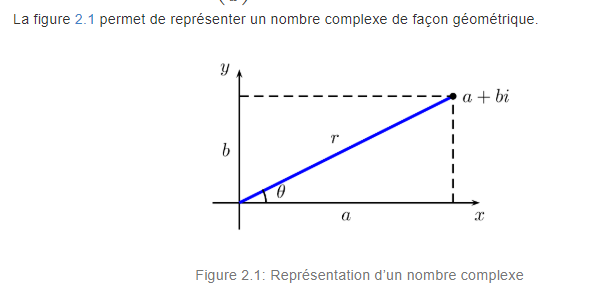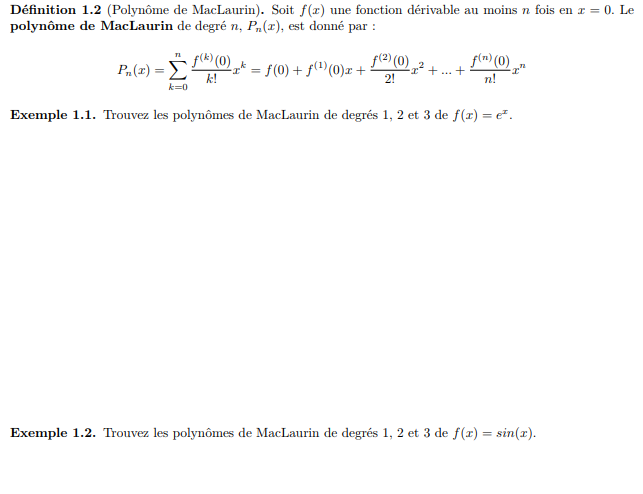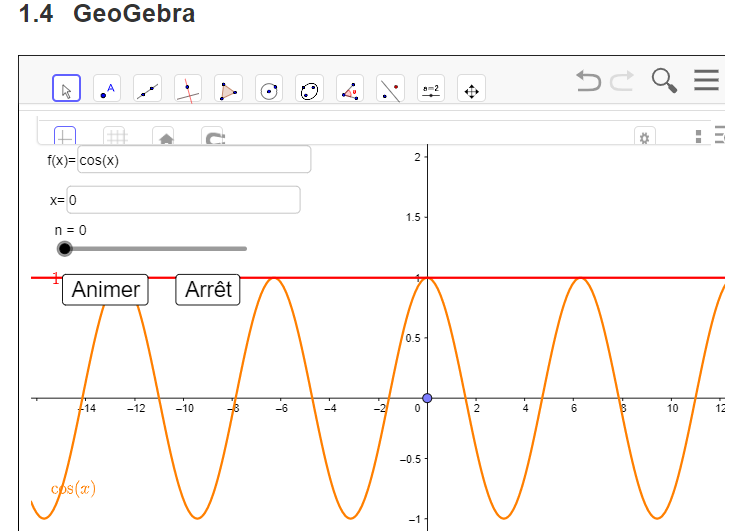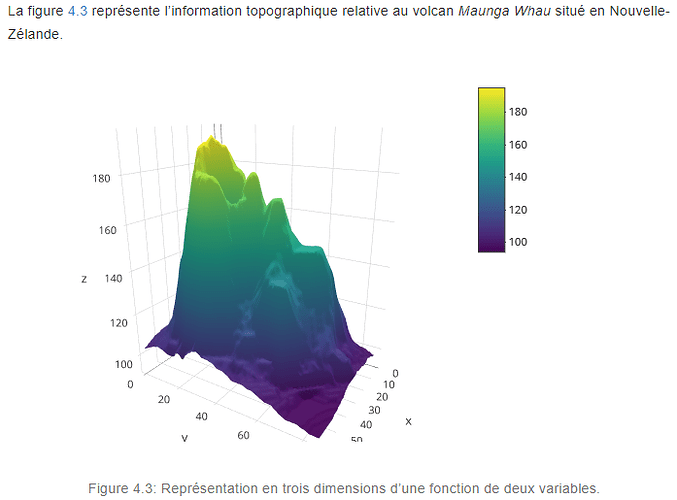This resource is called calcul3 and you can access it via it's website or you can access the source code in Github.
Disclaimer ![]() This is a work in progress. I'm writing this book as I teach this course this semester. There are some sections that are not finished, there are errors and mistakes. Some of the plots are not working, and probably plenty of other things that I haven't seen yet.
This is a work in progress. I'm writing this book as I teach this course this semester. There are some sections that are not finished, there are errors and mistakes. Some of the plots are not working, and probably plenty of other things that I haven't seen yet.
The goal of calcul3 is to have teacher's notes that I can project on the white board for my students. When I teach this course, I want my students to have some of the notions already written to focus my time primarly of the explanation of the notions and on the exercises. The html output of these notes can be used in class to understand all the notions. The pdf output of these notes will be printed and given to the students at the start of the course. The text for the examples will be written but blank space will be added to let the students try these exercises or copy the solution given by the teacher.
Furthermore, I want to add GeoGebra app to the html output so that the teacher can use them in the classroom. But it can be very beneficial if the students can play with these applications to understand more fully the concepts of the course.
I want to leverage the power of plotly to produce surface plots that we can play with in the html version of this book. The majority of the time in this course is passed on notions of functions in 3 dimensions. It's important for the students to be able to see these notions instead of just learning them.
Finally, this book is written in french.
HTML
Exercices
In the html output of this book, there will be some new notion and just after that some exercices that we will do in class.
Geogebra
There will be multiples GeoGebra app that will come with this book. As this is a work in progress, these applications are inside the book. But maybe they will be moved on GeoGebra Tube and only some hyperlinks will link them to the book.
Figures with pstricks
Since I wrote for a long time in \LaTeX and I'm just starting to switch to RMarkdown and Bookdown, I'm still using pstricks to produce some of my figures and plots. For the moment, I'm using the standalone package to produce png output from my \LaTeX code. The code for these figures can be found in the GitHub repo. There is probably (certainly?) a better way to do this but for the moment it's serving me well.

PLOTLY
Because we work in three dimensions constantly in this course, I want the student to be easily be able to play with three dimensional surfaces. You can see one example below and you can go the chapter on functions of several variables to play with these plots yourselves.
The most important aspect of the pdf output is to put some blank spaces afetr the exercises and examples to let the student try the problems. For the moment, my solution is to put the command \vspace*{_some length_} and hope for the best. I'm trying to focus most of my efforts on the rmarkdown source and not on the pdf output, just like Yihui Xie talked about. One of the reason that I'm now using bookdown is to forget about all the typesetting I was doing in \LaTeX. I was using SO much of my time in \LaTeX just tweaking tihings instead of just writing new content.

GITHUB
I really love the idea of students being able to write a pull request if they find some error in my book. I wrote two mathematics books that have been published and it's a nightmare when someone finds misprints and errors. Now I will receive a pull request, I merge it, I compile the book and push it to GitHub and the new version is live. It's incredible!
Technical details
When I started this book, I tried to use as few new things as possible to concentrate on the content of the book. But here are the little things that I added to the template:
- Use of the
block2engine to write examples. - Added a little (very little) bit of
csstoblock2engine - Use of the
standalonepackage in \LaTeX for using thepstrickspackage - Use of the
knitr:::is_html_output()command to plot theplotlygraph in html and use thepngproduced byorcain pdf output.
Thanks for this great contest and good luck to all!
Marc-André Désautels


